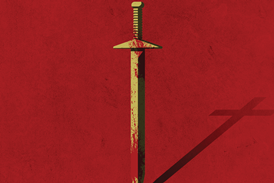Friends: The lasting legacy of TV’s most popular sitcom
By  Jamie Cutteridge2021-05-17T18:19:00
Jamie Cutteridge2021-05-17T18:19:00

With just 10 days to go until the Friends reunion, Jamie Cutteridge considers how the show has connected with young and old alike, and what Christians can take away from it
Related articles
-
 Reviews
ReviewsThe BBC’s ‘Godsquad’ mocks 4 kinds of Christian students. It’s a helpful exposé of our evangelistic errors
2021-10-21T15:28:00Z By Naomi Sherwood
The BBC Radio 4 drama, Godsquad might poke fun at Christian Unions, but it actually contains valuable lessons for all of us in how we share the good news of Jesus, argues Naomi Sherwood
-
 Opinion
Opinion6 ways to cultivate your faith at university
2021-09-22T09:46:00Z By Abigail Howe
Don’t drift from God at uni. Abigail Howe shares top tips from students on how to grow spiritually while making the most of uni life
-
 Opinion
OpinionMartin Bashir, the BBC and the Diana interview: Why as Christians we should always strive for honesty and integrity
2021-05-21T16:20:00Z By Paul Kerensa
The BBC and Bashir were wrong, but scapegoating them won’t help says Paul Kerensa
More from Features
-
 Magazine Features
Magazine FeaturesWhy your spiritual practices should change with the seasons
2025-12-22T12:13:00Z By Emma Timms
Struggle to get up for your quiet time when the mornings are dark and cold? You’re not alone, says Emma Timms. If you want to grow spiritually in 2026, work with the season you’re in, not against it
-
 Magazine Features
Magazine FeaturesBlessed are the thin? A Christian response to Ozempic
2025-12-22T12:12:00Z By Di Archer
It is thought that 2.5m people in the UK are now buying weight loss drugs privately – including many Christians. But the Ozempic trend raises huge questions about body image, shame and what it means to be “fearfully and wonderfully made”, says Di Archer
-
 Magazine Features
Magazine Features5 places you wouldn’t expect to find a chaplain
2025-12-22T12:01:00Z By Emma Fowle
From strip clubs to racecourses: meet the Christians taking God’s presence into places others fear to tread.
- Issues
- Topics A-Z
- Writers A-Z
- © 2025 Premier Christianity
Site powered by Webvision Cloud
























